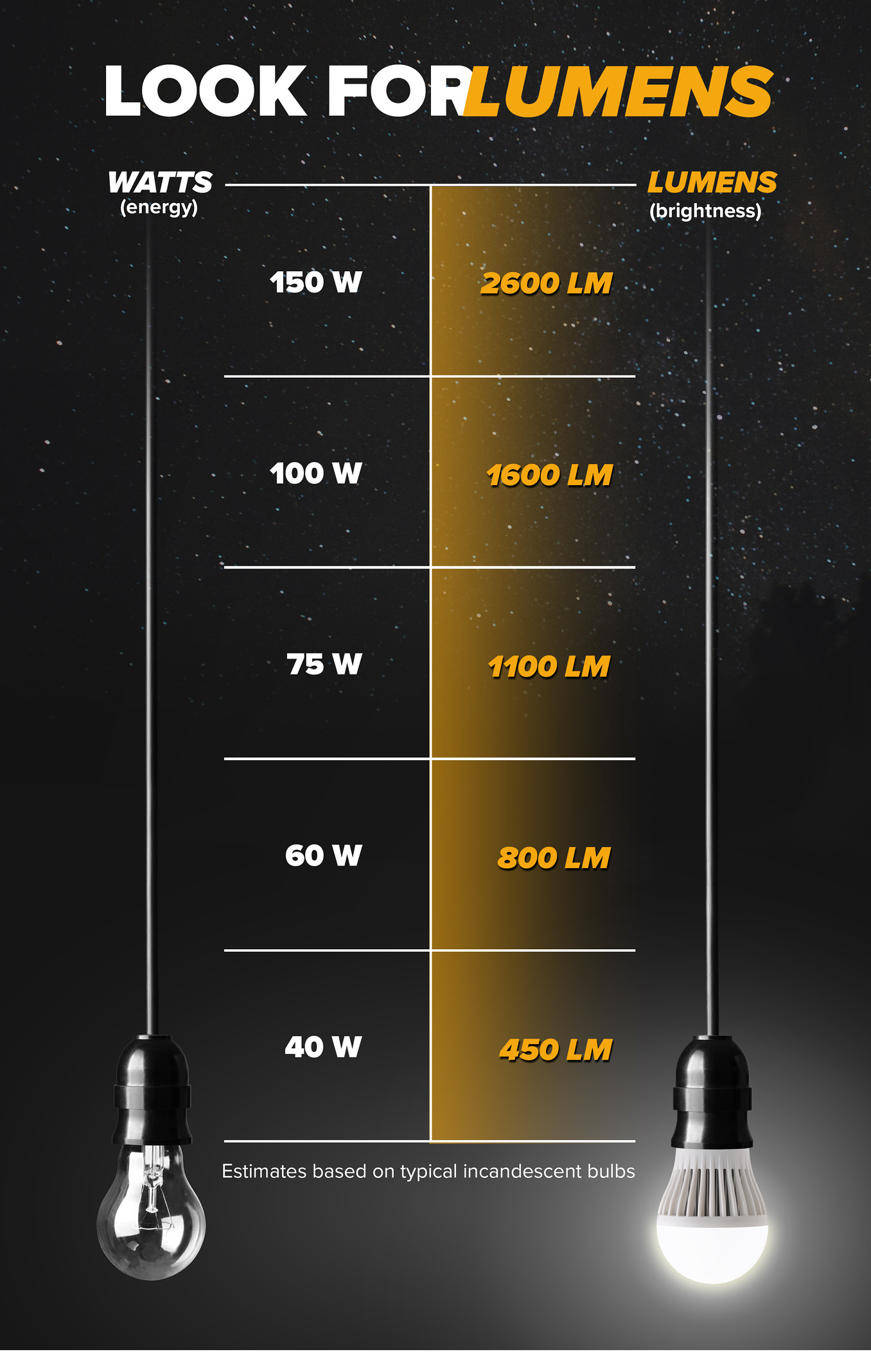When shopping for lightbulbs, compare lumens to ensure you’re getting the amount of light or level of brightness you want. Today’s Lighting Facts Label will make it easy to compare bulb brightness, color, life, and estimated annual operating cost.
Look for Lumens, Not Watts
Lumens and watts are different, making it harder to figure out what type of bulb to buy. For decades, consumers have bought incandescent lights based on watts, which indicates the bulb’s brightness. The more watts, the brighter the bulb.
The rules have changed. An LED that uses 60 watts is not comparable to an incandescent bulb that uses 60 watts because LEDs are designed to use less energy and naturally have a lower watt rating. This means it’s useless to use watts to determine brightness.
What’s a Lumen?
Lumens measure how much light you are getting from a bulb; the higher the lumen, the brighter the light. Therefore, lumens provide a more accurate indication of the amount of light the bulb will produce.
The brightness or lumen levels of lights in your home may vary widely. If you want something dimmer, go for fewer lumens; if you prefer brighter light, look for more lumens. Here’s a rule of thumb when replacing bulbs:
- Replace a 100-W bulb with an energy-saving bulb that gives you about 1,600 lumens
- Replace a 75-W bulb with an energy-saving bulb that gives you about 1,100 lumens
- Replace a 60-W bulb with an energy-saving bulb that gives you about 800 lumens
- Replace a 40-W bulb with an energy-saving bulb that gives you about 450 lumens
The Lighting Facts Label
The label provides the lumens (lm) — or brightness — of the bulb, estimated operating cost for the year, and the color of the light (from warm/yellowish to white to cool/blue). Review the comparison chart above right for more information.



